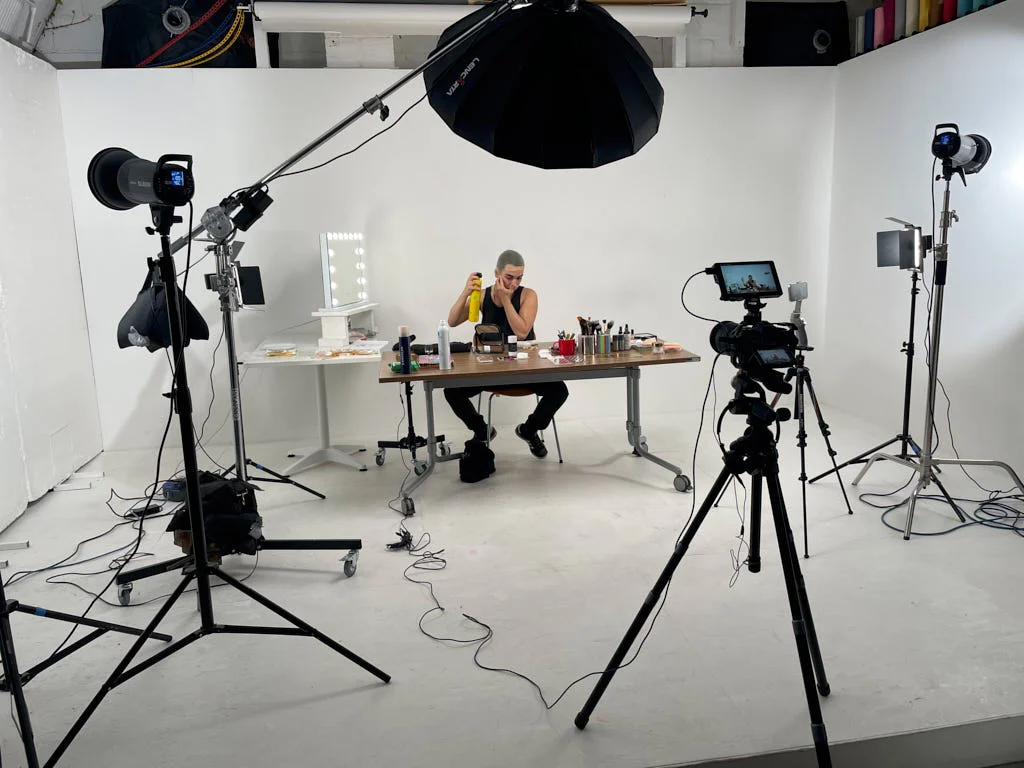Building a successful photo studio requires more than just a camera and a space—it involves careful planning, the right equipment, and a solid business strategy. Whether you are setting up a studio for portrait photography, product shoots, or commercial work, you need to consider factors such as location, lighting, branding, and client experience. A well-designed studio not only enhances the quality of your photos but also attracts clients and boosts your professional reputation. This guide will walk you through the essential steps to creating a photo studio that stands out and thrives in a competitive market.
1. Choosing the Right Location
The location of your studio plays a critical role in its success. If you are targeting high-end clients, a studio in a prime area with easy access and parking will create a professional impression. On the other hand, if your focus is on small business product photography, a home-based studio or a low-rent commercial space may be more cost-effective.
Consider factors such as natural light availability, room size, and accessibility. A studio with high ceilings and ample space allows for more flexibility when setting up different photography styles. If possible, choose a location with good ventilation and climate control to keep both clients and equipment comfortable.
2. Investing in Essential Equipment
A professional studio requires the right equipment to produce high-quality images. Your gear will depend on the type of photography you specialize in, but some essential items include:
- Cameras and Lenses: Invest in a high-quality camera that suits your style, along with versatile lenses such as a 50mm prime for portraits or a macro lens for product photography.
- Lighting Equipment: Studio lighting is crucial for consistency. Softboxes, umbrellas, LED panels, and strobes help control lighting conditions and reduce harsh shadows.
- Backdrops and Props: A selection of seamless paper backdrops, fabric options, and props adds variety to your shoots. Neutral colors like white, black, and gray are versatile, while bold colors can create artistic effects.
- Tripods and Light Stands: Stability is key in studio photography. A sturdy tripod ensures sharp images, while adjustable light stands allow precise positioning of your lights.
- Editing Setup: A powerful computer with professional editing software such as Adobe Photoshop or Lightroom is essential for post-processing. Calibrating your monitor ensures accurate color correction.
3. Creating the Perfect Studio Layout
The layout of your studio should be designed for efficiency and ease of movement. Consider the workflow from client arrival to the final shot. A typical studio setup includes:
- Shooting Area: The main space for taking photographs, with room for lighting setups and subject positioning.
- Editing Station: A dedicated desk with a computer, editing software, and backup storage for post-production work.
- Client Lounge: A comfortable space for clients to relax before or after their session, with seating, a mirror, and refreshments.
- Storage Area: A designated section for keeping photography equipment, props, and backdrops organized and easily accessible.
A clutter-free studio enhances professionalism and makes it easier to focus on creativity. If space is limited, use wall-mounted storage or collapsible backdrops to maximize the area.
4. Branding and Marketing Your Studio
To attract clients, your studio needs a strong brand identity and an effective marketing strategy. Start by defining your niche—whether it’s wedding photography, corporate headshots, fashion, or product photography.
Build an Online Presence: A professional website showcasing your portfolio, pricing, and contact details is essential. Social media platforms like Instagram, Facebook, and Pinterest help you reach potential clients and showcase your work.
Networking and Collaborations: Partnering with local businesses, event planners, and models can increase exposure and bring in new clients. Offering styled shoots or collaborating with makeup artists can also enhance your portfolio.
Advertising and Promotions: Running targeted ads, offering special promotions, or hosting photography workshops can attract clients. Encourage satisfied customers to leave reviews and referrals to boost credibility.
5. Enhancing the Client Experience
Providing an exceptional client experience sets your studio apart from competitors. From the moment a client books a session to the final delivery of images, every interaction should be professional and welcoming.
- Clear Communication: Outline expectations, pricing, and session details before the shoot. Provide guidance on outfits, styling, and posing.
- Comfortable Atmosphere: Ensure the studio is clean, well-lit, and comfortable. Offering amenities such as a changing room, refreshments, and music can help clients feel at ease.
- Efficient Workflow: Streamline your booking process with online scheduling and digital contracts. Quick turnaround times for edited photos will impress clients and encourage repeat business.
- Personalization: Tailor sessions to fit each client’s needs and preferences. A personalized approach fosters client satisfaction and loyalty.
6. Managing Finances and Scaling Your Business
A well-managed budget is crucial for a successful studio. Start by outlining your startup costs, including rent, equipment, insurance, and marketing expenses.
- Pricing Strategy: Set competitive rates that reflect your expertise and expenses. Offer packages with different levels of service to cater to various budgets.
- Diversifying Revenue Streams: Explore multiple income sources, such as selling prints, offering photography classes, or renting your studio space to other photographers.
- Tracking Finances: Use accounting software to monitor expenses, profits, and taxes. Keeping detailed records helps ensure financial stability.
As your business grows, consider hiring assistants or expanding into new photography services. Investing in high-end equipment, better marketing, and additional services like photo albums or retouching packages can further enhance profitability.
Conclusion
Building a successful photo studio requires a combination of technical expertise, strategic planning, and excellent customer service. By choosing the right location, investing in quality equipment, designing an efficient workspace, and implementing effective marketing strategies, you can create a thriving photography business. Prioritizing client experience and managing finances wisely will ensure long-term success. With dedication and creativity, your photo studio can become a go-to destination for professional photography.
